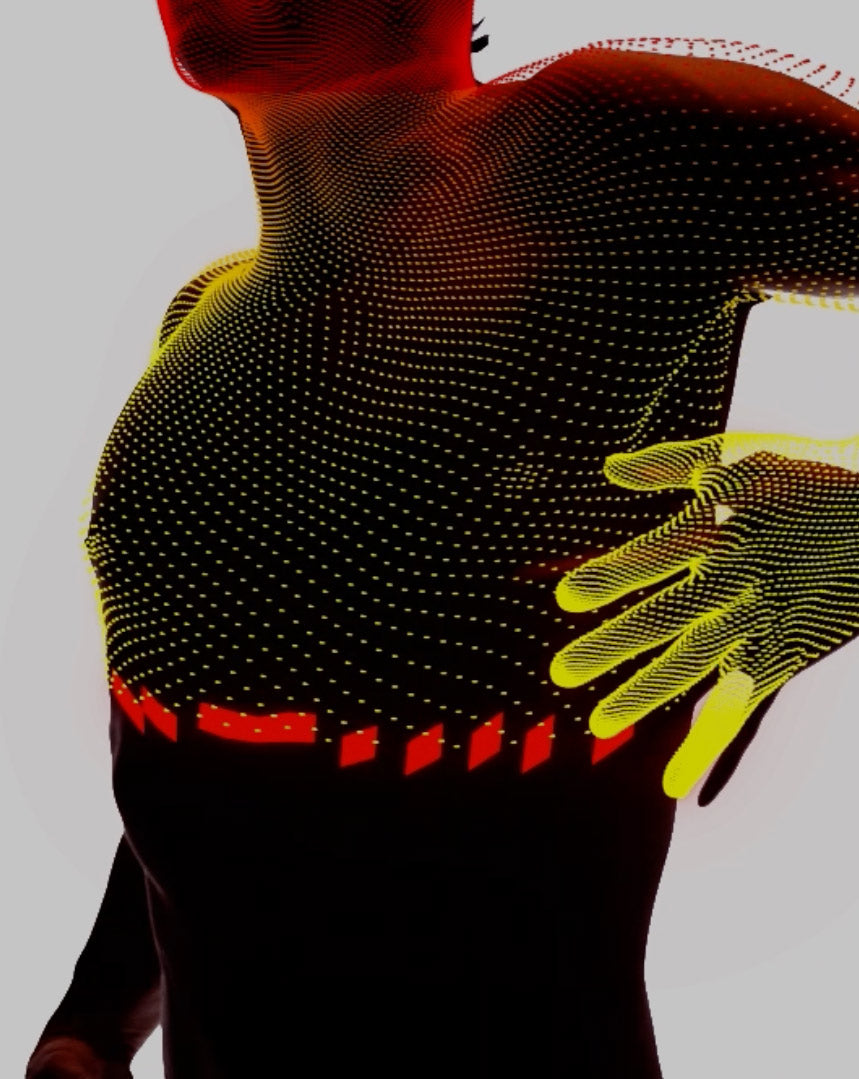Few colours are linked as closely with human history, and indeed our very survival, as red ochre. And when we say human history, we're not just talking about Homo Sapiens – there's evidence that our Neanderthal cousins also used the pigment as far back as 250,000 years ago in their burial rituals.
But apologies, we’re getting ahead of ourselves (by going back a quarter of a million years).
You see, before we discuss red ochre, we actually need to go way back into the mists of antiquity to a genetic adaptation that occurred roughly 23 million years ago in our early primate ancestors.
SEEING RED

It is thought that the ability to detect these colours can help us read our fellow humans better and detect danger or mating signals.
According to the archaeological record, it was around this time that monkeys, apes and Hominini (the branch of the ape family that led directly to you) inherited the ability to see three particular and very important colours. Red, green and blue.
The importance of this cannot be overstated.
Suddenly our early ancestors were able to discern which fruits were ripe and ready to eat, and which leaves were young, tender and easily digested. An important genetic advantage and one that led us to evolutionary dominance as a species.
In nature, many primate species use reddish colours both for social communication and in selecting a prospective mate. Think baboon bums or Macaque faces.
And humans, although we like to distance ourselves from our primate brethren, also use red in a lot of our communication, consciously and unconsciously. Think of our emotional states that relate to blood flow, or the lack of it, to the skin. Angry red faces, as well as being pale when sick. And of course, blushing.
It is thought that the ability to detect these colours can help us read our fellow humans better and detect danger or mating signals.
With this being the case, the idea of applying red ochre to our bodies or surroundings to express something to others certainly makes good biological sense. Add to that the fact that it is the colour of blood, and suddenly it takes on a whole new level of symbolic significance...
Perhaps nothing illustrates this quite as well as the fact that a number of languages only have two words to express colour: RED and NOT-RED. Yes, really, and you can read more about this in our post about Mineral Blue.
RED HOT THINKING

“The emergence of modern human behaviour is one of the most important debates happening now, and ochre plays a central role in that debate.” - Daniela Rosso of the University of Bordeaux and University of Barcelona.
The colour red is clearly critical to our species, and it’s the use of red ochre that’s one of the most important proxies researchers have for charting the evolution of human cognition. Really.
Ochre is a natural clay earth pigment containing a mixture of ferric oxide and differing quantities of clay and sand. Although we almost always think of it as being red, in its natural state it is surprisingly yellow. Colour variations, such as deep orange, brown and of course red, occur according to the levels of other minerals that are present. So in the case of red ochre, the distinctive colour actually derives from the large quantities of haematite (aka iron oxide) present.
But to transform the red ochre from the yellow, the compound has to be heated in excess of 300 °C. Because humans would have had to use fire to get red ochre from yellow, this suggests a level of applied thinking and cooperative reasoning. Important attributes that distance us from other animals and put us well on the way to becoming modern humans.
One of the earliest examples of this heat-treating ochre dates at least as early as the Middle Stone Age, and some of the oldest examples can be found in Blombos cave, South Africa. This astounding time capsule, also known as the “red ochre paint factory” contains a 73,000-year-old cross-hatched drawing on a silcrete (stone) flake made with an ochre crayon.
It has also yielded other indicators of symbolic thinking. These include shell beads covered with ochre and pieces of ochre engraved with abstract patterns. They even discovered a complete toolkit consisting of two abalone shells filled with an ochre rich substance – a red paint – and all the artefacts associated with making it.
REDDY TO WEAR

This function as a sunscreen may have made red ochre instrumental in extending human endurance, linking it with the ability to travel longer distances in search of food and shelter.

It is thought these early, primitive cultures had multiple uses for the pigment, not just for mark making on cave walls, skin and clothing, but as a medicinal salve to prevent sun burn, clean hair, repel insects and preserve leather.
In fact, many indigenous cultures still use red ochre for similar purposes today.
One tribe particularly famous for this are the Himba people of Northern Namibia, who famously mix red ochre with butterfat to make an otjize paste as a protective coat for their hair and skin.
This function as a sunscreen may have made red ochre instrumental in extending human endurance, linking it with the ability to travel longer distances in search of food and shelter. This was an amazing adaptive advantage, and one that enabled us to spread from Africa and begin populating the rest of the world.
Here in Australia, ochre is plentiful and there are enormous deposits of it across the country, including the Western Desert, Kimberley and Arnhem Land. The early Aboriginals were quick to realise the usefulness of the pigment and started using it for body decoration, sun protection, cave painting, bark painting, preserving animal skins and mortuary practises.
At Lake Mungo, burial materials have been excavated, including ochre-painted bones, that date back to the arrival of people in Australia; The most famous of these is "Mungo Man" who was buried and sprinkled with red ochre somewhere between 30,000 years and 60,000 years ago.
And Aboriginals still use red ochre to this day, both in their distinctive and beautiful paintings and for their ceremonial dances and corroborees.
THE ANCIENT EGYPTIANS (AGAIN)

For Egyptian women, however, it was used to dye their clothing and to stain their cheeks and lips a becoming shade of red.
Anyone who follows these blogs regularly, will know that the ancient Egyptians appear in pretty much all of them – testament to their place in history as one of the leading cultures of the ancient world.
Because Egypt had an abundance of naturally occurring ochre, red played a prominent cultural role in society, usually being used to portray men’s skins in contemporary artworks. It was also associated with life, health and victory, and was believed to possess healing properties, including as a medicinal salve for intestinal and eye problems.
For Egyptian women, however, it was used to dye their clothing and to stain their cheeks and lips a becoming shade of red. This led to the association we still have today with red as a sexual colour.
THE COLOUR OF PASSION
Red is obviously one of the most important colours in human history, with an abundance of symbolism – the colour of life, health, vigour, war, courage, anger, love and religious fervour. Interestingly, all of these attributes can be linked back to a single word.
Passion.
So if you’re passionate about history, or evolution, or anything really then make a short trip to our women's or men's T-shirt style templates to score yourself a Magic Fit® Tee in limited edition Red Ochre.
But you’d better redline it, because if they’re sold out you’re going to be ruddy annoyed.










